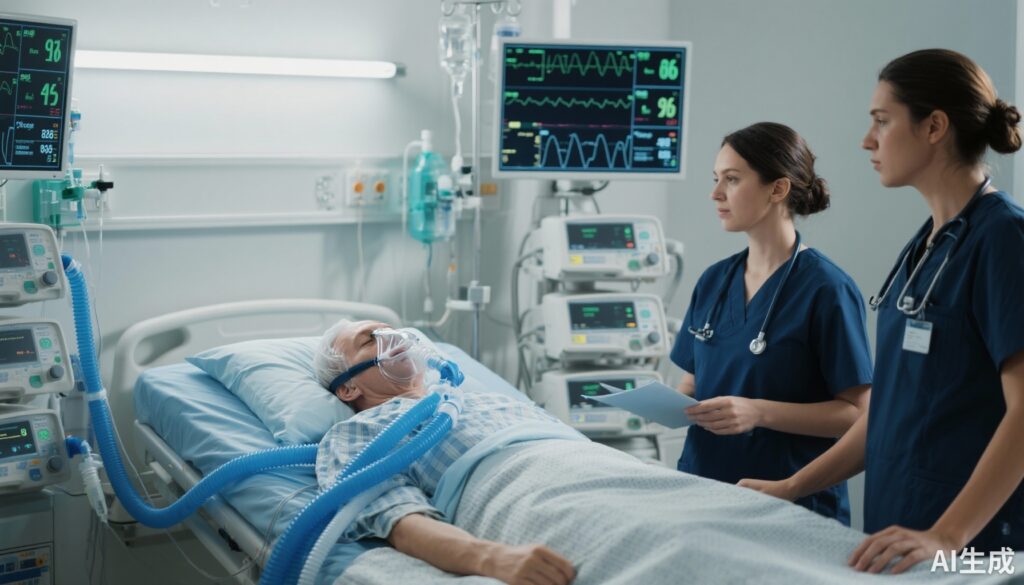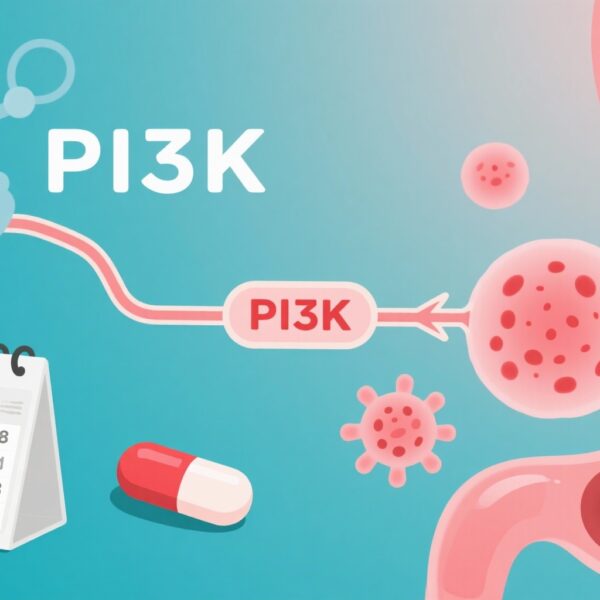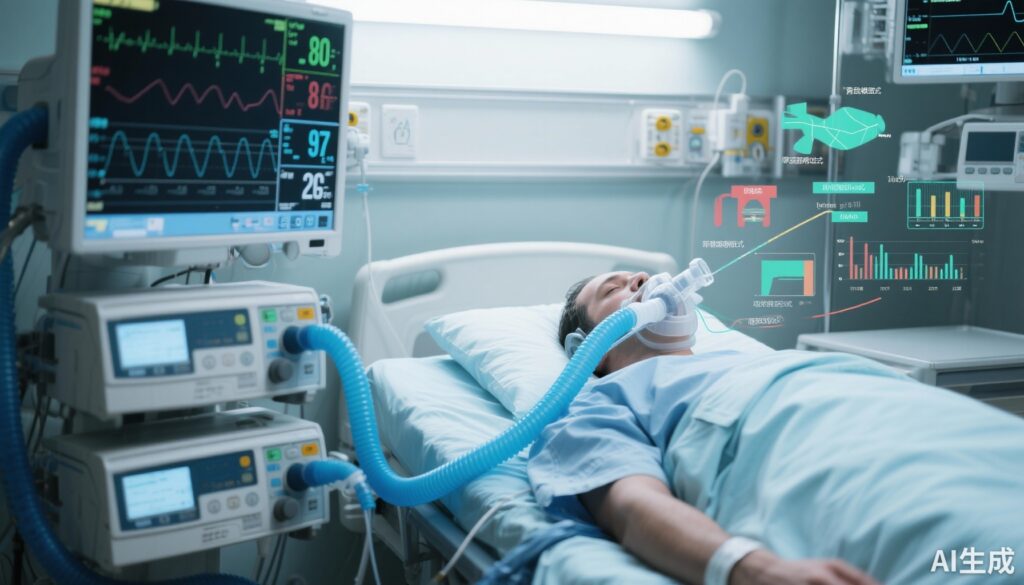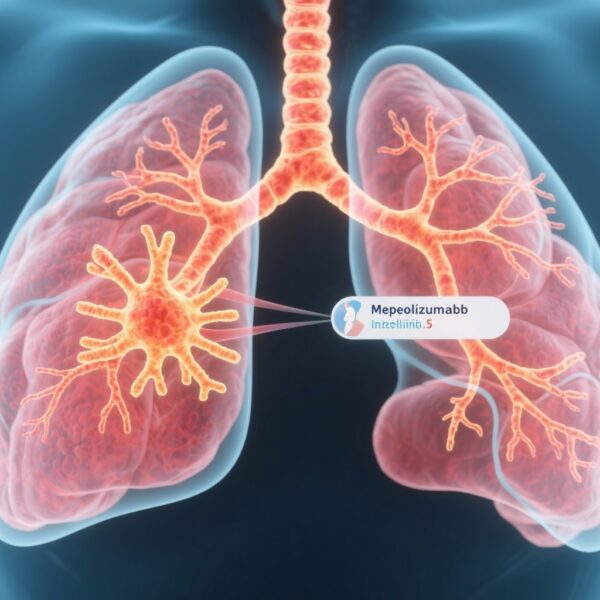Background
Mechanical ventilation is a lifesaving intervention for critically ill patients experiencing respiratory failure. However, prolonged mechanical ventilation is associated with significant complications including ventilator-associated pneumonia, muscle weakness, and longer intensive care unit (ICU) stay, which adversely impact patient morbidity and mortality as well as healthcare resources. Timely and safe liberation from mechanical ventilation is a pivotal goal in critical care management to minimize these adverse effects and improve long-term outcomes.
Pressure-support ventilation (PSV) is a widely used mode of partial ventilatory support that assists spontaneous breaths by delivering a preset level of pressure, targeting normalization of respiratory rate and tidal volume. Proportional-assist ventilation with load-adjustable gain factors (PAV+) is an alternative mode intended to enhance patient-ventilator synchrony by dynamically assisting patient effort, targeting normalization of the work of breathing. Whether PAV+ results in a shorter duration of mechanical ventilation compared to PSV has remained an important clinical question.
Study Design
The PROMIZING trial was an international, multicenter, randomized controlled clinical trial designed to evaluate the effect of PAV+ compared with PSV on the time to successful liberation from mechanical ventilation in critically ill adults. This trial enrolled 722 adult patients across 23 centers in seven countries who had been on mechanical ventilation for at least 24 hours and were capable of tolerating partial ventilatory support but were not yet ready for extubation.
Participants were randomized to receive either PAV+ targeting normal work of breathing or PSV targeting a normal respiratory rate and tidal volume. The primary endpoint was the median time from randomization to successful liberation from mechanical ventilation, defined as sustained extubation or removal from mechanical ventilatory support without reintubation for a specified period. Secondary outcomes included the number of ventilator-free days, incidence of reintubation or tracheostomy, 90-day mortality, sedation requirements, and safety events.
Key Findings
Among 573 randomized patients included in the primary analysis, the median time to successful liberation was 7.3 days (95% confidence interval [CI], 6.2 to 9.7) in the PAV+ group versus 6.8 days (95% CI, 5.4 to 8.8) in the PSV group. This difference was not statistically significant (P = 0.58), indicating that PAV+ did not reduce the duration of mechanical ventilation compared to PSV.
The median number of ventilator-free days was comparable between groups. Additionally, incidence rates of reintubation and tracheostomy were similar, as was 90-day mortality (29.6% in PAV+ vs. 26.6% in PSV). These findings demonstrate no detectable benefit of PAV+ over PSV in improving hard clinical outcomes related to mechanical ventilation duration or survival.
Regarding safety and sedation, the PAV+ group had a greater reduction in the mean midazolam-equivalent sedative dose at day 28 relative to baseline (-1.51 ± 3.28 mg per kg) compared with the PSV group (0.04 ± 0.97 mg per kg), suggesting a potential sedative-sparing effect with PAV+. Serious adverse event rates were comparable between groups (10.8% in PAV+ vs. 9.8% in PSV; P = 0.79).
Expert Commentary
The PROMIZING trial provides robust evidence that PAV+, despite its physiological appeal of enhancing patient-ventilator interaction, does not translate to clinically meaningful reductions in mechanical ventilation duration or mortality compared with conventional PSV. This aligns with prior smaller studies suggesting improved patient comfort and synchrony but unclear impact on clinical endpoints.
Notably, the potential reduction in sedative requirements with PAV+ may have implications for ICU delirium and long-term functional recovery, though this requires further dedicated investigation. Limitations include the exclusion of patients with severe hypoxemia or unstable hemodynamics, which may affect generalizability, and the complexity of ventilator management protocols across centers.
Current guidelines continue to endorse PSV as a standard partial support mode during weaning, with PAV+ as an alternative that can be considered based on clinician expertise and patient comfort without expectation of shortened ventilation duration.
Conclusion
In critically ill adult patients receiving mechanical ventilation and transitioning to partial ventilatory support, PAV+ did not reduce the time to successful liberation compared with conventional PSV. Both modalities demonstrated similar safety profiles and clinical outcomes. The decision to use PAV+ should consider individual patient factors, local expertise, and potential benefits in sedation reduction. Further research may clarify whether specific patient subgroups derive benefit from proportional-assist ventilation techniques and explore its impact on patient-centered recovery metrics.
This study underscores the importance of rigorous clinical trial evaluation of novel ventilatory strategies, reinforcing that physiological rationales must be corroborated by meaningful clinical improvements to change standards of care.
References
Bosma KJ, Burns KEA, Martin CM, Skrobik Y, Mancebo Cortés J, Mulligan S, Lafreniere-Roula M, Thorpe KE, Suárez Montero JC, Morán Chorro I, Rodríguez-Farré N, et al; PROMIZING Study Investigators, the Canadian Critical Care Trials Group, and the REVA Network. Proportional-Assist Ventilation for Minimizing the Duration of Mechanical Ventilation. N Engl J Med. 2025 Sep 18;393(11):1088-1103. doi: 10.1056/NEJMoa2505708.



